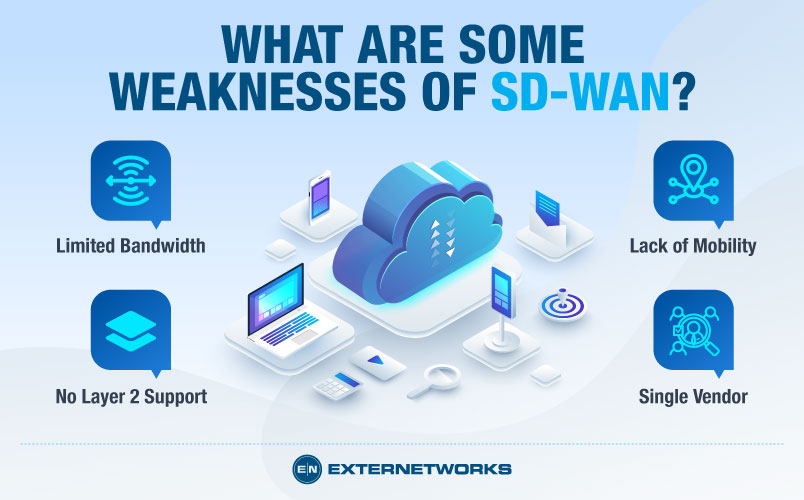The benefits of software-defined networking (SDN) are widely known. But what are some of the weaknesses? Complex management, costly deployment, and troubleshooting processes are among the issues that organizations should be aware of.
SD-WAN (Software-Defined Wide Area Network) is the latest evolution in WAN technologies. As more and more devices are connected via the internet, it becomes increasingly important to have a secure connection. The traditional solution used a dedicated line or VPN tunnel to securely connect all endpoints, which can become expensive when connecting hundreds of devices.
This is why SD-WAN came up. It allows you to create a single virtual connection across multiple locations, which means you only pay monthly fee for everything. You can manage the entire connection using a central console.
Despite its many advantages, SD-WAN still has its fair share of drawbacks. Here are some of the main ones:
One of the most significant limitations of SD-WAN is that it only supports point-to-point connections, which means that you cannot connect two separate sites.
Although SD-WAN supports Layer 3 routing, it does not support Layer 2 switching. This means that you can’t use VLANs or QoS.
Although SD-WAN supports mobile clients, they must be static, making them unsuitable for environments requiring frequent movement.
SD-WAN is available from different vendors like Cisco, HPE/Silver Peak, VMware/VeloCloud, Palo Alto Networks, Versa Networks, and Fortinet Secure SD-WAN.
Although this may seem like a good thing, it limits the number of vendors you can choose from.

If you have decided that SD-WAN is right for you, you need to think carefully about where you want to go next. There are three ways that you could proceed:
An SDN controller is a device that sits between your router and your SDN software. The controller manages all aspects of the traffic flow, including configuring the switches and routers.
It works by creating a logical representation of the physical topology of your network. Once this model has been created, it can create virtual links between devices connected to the same switch. These virtual links allow you to move traffic around your network freely.
The downside of using an SDN controller is that it requires specialist knowledge to install and operate. It also adds complexity to your network because you now have multiple points of failure.
A third-party solution is explicitly designed for SDN, and they usually offer more functionality than a standard SD-WAN product but come at a higher price tag.
This option involves installing SD-WAN directly on your hardware. This is the simplest option, but it will cost you significantly less money. However, if you don’t have experience working with networking equipment, it might be better to leave it to someone else.
As we mentioned earlier, there are several reasons why SD-WAN doesn’t consistently deliver what it promises. To help you get the most out of your deployment, here are some tips that will make life easier:
In conclusion, there are so many benefits of SD-WAN, but it isn’t suitable for every situation. If you are looking for a simple, easy-to-use solution, you should consider purchasing an SDN controller instead. If you want something that gives you complete control over your network, then you should look at a third-party solution. And if you want a fully integrated system, you should consider going native.
